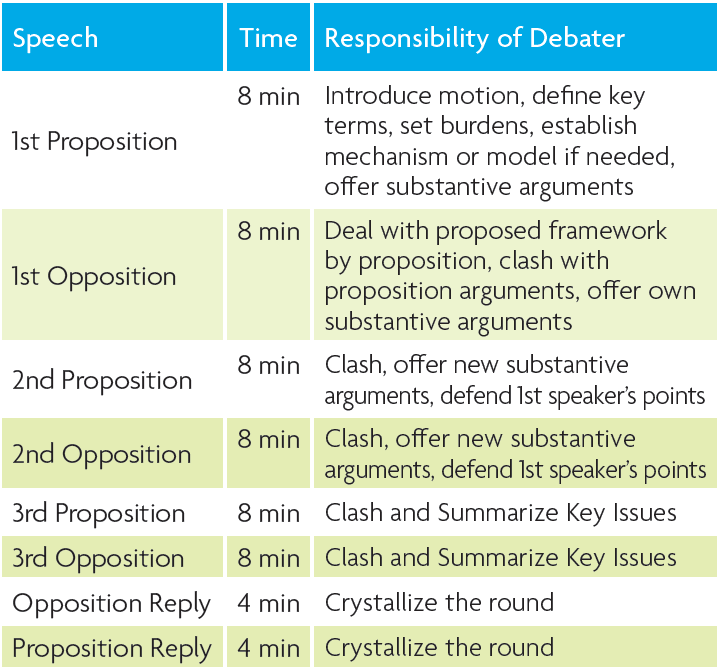Speech Tips for Students
Speech Tips for Students: Speak confidently and engage your audience to deliver a successful speech. Whether it’s through proper preparation, effective body language, or clear articulation, these tips will help you improve your presentation skills and leave a lasting impression on your listeners.
Good public speaking skills are essential for students to succeed in various academic and professional settings. Whether you have to deliver a presentation in class or give a speech at an event, being able to communicate effectively is crucial. However, many students struggle with public speaking due to nerves or lack of experience.
The good news is that with the right techniques and practice, anyone can become a confident and persuasive speaker. We will explore some valuable tips for students to enhance their speech delivery, engage their audience, and deliver memorable presentations. By following these guidelines, you can develop the skills necessary to captivate your listeners and present your ideas with clarity and confidence.
Speech Tips For Students: Overcoming Nervousness
Looking to improve your public speaking skills? Check out these speech tips for students on overcoming nervousness. Gain confidence and deliver a memorable presentation with these helpful techniques.
Giving a speech can be quite nerve-wracking, especially for students who may not have much experience in public speaking. However, there are effective strategies to help overcome nervousness and deliver a confident and engaging speech. Here are some valuable tips to alleviate anxiety and boost your speech delivery:
Visualize Success To Calm Nerves:
- Imagine yourself delivering a successful speech with confidence and conviction.
- Visualize the positive reactions from your audience, such as nods, smiles, and applause.
- Focus on the feeling of accomplishment and satisfaction you will experience after delivering a well-received speech.
Use Deep Breathing Techniques For Relaxation:
- Take slow and controlled breaths to activate your body’s relaxation response.
- Inhale deeply through your nose, hold it for a few seconds, and then exhale slowly through your mouth.
- Repeat this deep breathing pattern several times before and during your speech to calm your nerves and increase focus.
Practice Mindfulness To Manage Anxiety:
- Before your speech, take a few moments to be fully present and aware of your surroundings.
- Engage in mindful breathing, allowing your thoughts and worries to pass without judgment.
- Focus on the present moment and the task at hand, your speech, rather than dwelling on future outcomes.
By employing these tips, students can effectively overcome nervousness and deliver engaging and confident speeches. Visualizing success, utilizing deep breathing techniques, and practicing mindfulness will help reduce anxiety and allow students to showcase their skills and knowledge. Remember, with practice and perseverance, anyone can become a confident and compelling speaker.
Engaging The Audience: Effective Body Language
Engaging the audience through effective body language is essential for students to deliver impactful speeches. By using gestures, maintaining eye contact, and displaying confidence, students can captivate their listeners and effectively convey their message.
Maintaining eye contact, utilizing confident posture and gestures, and varying vocal tone and pace are all key aspects of effective body language when delivering a speech. Engaging the audience through nonverbal cues can greatly enhance the impact of your message.
Here are some tips to help you master the art of body language:
Maintain Eye Contact For Connection:
- Look directly at individuals in the audience to establish a personal connection.
- Avoid staring at one person for too long; make sure to distribute your eye contact throughout the room.
- Maintain eye contact during important points to convey confidence and authenticity.
Utilize Confident Posture And Gestures:
- Stand tall with your shoulders back and maintain an open stance to exude confidence.
- Use purposeful hand gestures to emphasize key points and add visual interest.
- Avoid fidgeting or excessive movement, as it can distract the audience from your message.
Vary Vocal Tone And Pace For Emphasis:
- Modulate your voice by varying the pitch, volume, and pace to add emphasis to important ideas or emotions.
- Speak clearly and audibly, ensuring that your voice reaches all corners of the room.
- Use pauses strategically to create suspense or allow certain points to sink in.
Remember, effective body language can enhance your speech and engage your audience on a deeper level. Practice these techniques to ensure that your nonverbal cues align with your spoken words and create a memorable experience for your listeners.
Crafting A Compelling Speech: Content And Structure
Crafting a compelling speech requires careful attention to both content and structure. In this article, we provide valuable speech tips for students, helping them to engage their audience, organize their ideas effectively, and deliver a powerful message. With our expert guidance, students can master the art of public speaking and leave a lasting impact on their listeners.
Public speaking can be a nerve-wracking experience for students, but with the right approach, it can also be an opportunity to shine. Crafting a compelling speech requires careful consideration of both the content and structure. In this section, we will explore some tips to help students deliver impactful speeches that captivate their audience.
Choose A Persuasive Topic For Impact:
- Select a topic that resonates with the audience: Understand the interests and concerns of your audience and choose a topic that will grab their attention. Consider their age, background, and current trends to ensure your speech is relevant and engaging.
- Take a stand: Avoid neutral or clichéd topics and instead, choose a topic that evokes strong emotions. By presenting a clear position, you can incite interest and spark meaningful discussions.
- Research thoroughly: Gather reliable sources and statistics to back up your arguments. By providing credible evidence, you can persuade your audience and establish yourself as a knowledgeable speaker.
Create A Strong Opening To Grab Attention:
- Start with a compelling anecdote or story: Begin your speech with a relatable story that grabs the attention of your audience. This will immediately engage them and pique their curiosity about the topic you are about to discuss.
- Ask a thought-provoking question: Pose a compelling question that stimulates your audience’s curiosity. By challenging their thinking, you can draw them into the conversation and encourage active participation.
- Use a powerful quote: Start with a relevant and impactful quote that sets the tone for your speech. This can create a sense of anticipation and intrigue among your listeners.
Develop Clear Main Points And Supporting Evidence:
- Stick to a logical structure: Organize your speech into clear sections, each focusing on a main point. Ensure a smooth flow by using transitional phrases to connect your ideas.
- Present supporting evidence: Back up your main points with concrete examples, facts, and statistics. This not only adds credibility to your speech but also helps your audience understand and remember your key messages.
- Utilize visual aids: Visual aids such as slides or props can enhance the impact of your speech and make complex concepts easier to grasp. However, be mindful not to rely too heavily on them, as they should enhance your speech, not overshadow it.
Crafting a compelling speech requires careful consideration of both the content and structure. By choosing a persuasive topic, creating a strong opening, and developing clear main points with supporting evidence, students can deliver speeches that truly captivate their audience. Remember, practice makes perfect, so don’t forget to rehearse your speech and garner valuable feedback to refine your delivery style.
Good luck!

Credit: www.youtube.com
Frequently Asked Questions On Speech Tips For Students
What Are The 5 Basic Public Speaking Tips?
1. Organize your speech, practice it thoroughly, and know your audience well. 2. Maintain eye contact, use gestures, and vary your tone to engage listeners. 3. Keep your message simple, memorable, and backed by evidence or examples. 4. Embrace nervousness, breathe deeply, and speak confidently to overcome anxiety.
5. Use visual aids, like slides or props, strategically to enhance your presentation.
What Are 7 Things That Make A Good Speech?
A good speech possesses seven key elements: clarity, structure, engaging content, delivery, audience connection, passion, and memorable conclusion.
What Are The 14 Tips For Effective Speech Delivery?
To deliver an effective speech, here are 14 tips: 1. Practice your speech thoroughly to build confidence. 2. Begin with a powerful opening to grab your audience’s attention. 3. Use clear and concise language to ensure understanding. 4. Maintain appropriate eye contact throughout your speech.
5. Use gestures and body language to enhance your message. 6. Speak at a moderate pace to keep your audience engaged. 7. Vary your tone and pitch to add emphasis and interest. 8. Use visuals or props to support your key points.
9. Include personal stories or anecdotes to connect with your audience. 10. Pause for effect and to allow your audience to absorb information. 11. Use rhetorical devices, such as repetition or parallelism, to make your speech more memorable. 12. Be aware of your body posture and stand tall to exude confidence.
13. Adapt your speech to the specific audience and context. 14. Conclude with a strong ending that summarizes your main points and leaves a lasting impression.
What Are The 7 P’S Of Public Speaking?
The 7 P’s of public speaking include: Preparation, Purpose, Practice, Presence, Projection, Persuasion, and Positivity.
Conclusion
To conclude, mastering the art of public speaking is a valuable skill for students to develop. By implementing these speech tips, students can effectively communicate their ideas and engage their audience. Confidence, preparation, and the use of visual aids are key elements in delivering a successful speech.
Practicing and refining their speaking skills will not only improve their academic performance but also prepare them for future personal and professional endeavors. Remembering to speak clearly, maintain eye contact, and use appropriate body language will help students leave a lasting impression on their listeners.
With time and dedication, anyone can become a confident and compelling speaker. So, go out there, embrace the spotlight, and become the confident speaker you were meant to be. Your audience awaits your words with anticipation and admiration.


